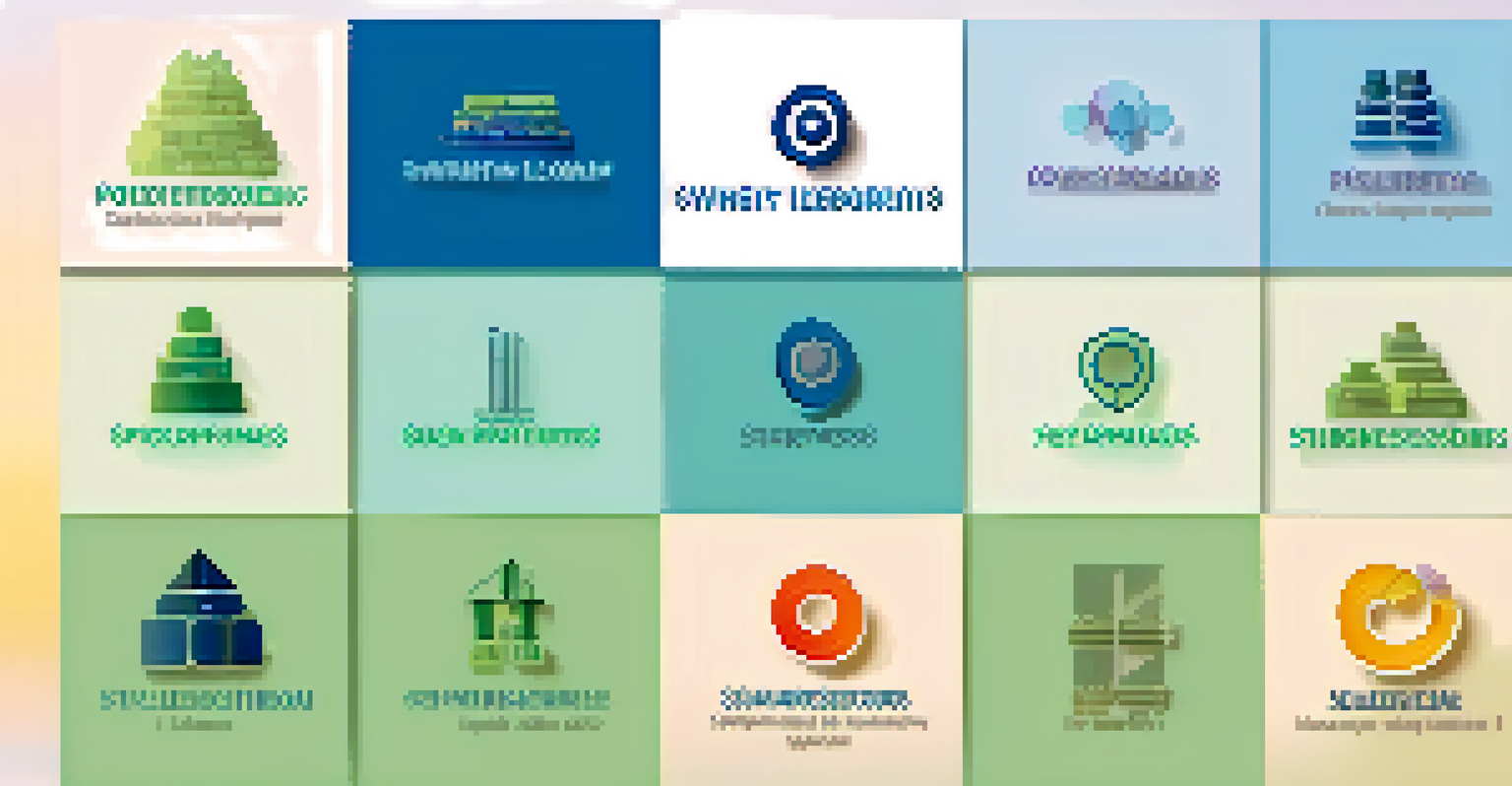Using the Business Model Canvas for Business Innovation

What is the Business Model Canvas and Why Use It?
The Business Model Canvas is a strategic management tool that provides a visual framework for developing, refining, and innovating business models. It consists of nine essential building blocks that cover everything from value propositions to customer relationships. By simplifying complex business ideas into a single-page format, it enables entrepreneurs and teams to see the big picture and identify opportunities for growth.
Innovation distinguishes between a leader and a follower.
Using this canvas is like having a roadmap for your business journey. It helps you map out how your company creates, delivers, and captures value. This clarity is crucial, especially in today’s fast-paced market where adaptability is key.
Moreover, the canvas encourages collaboration among team members, making it easier to brainstorm and innovate together. This collective approach often leads to insights that might not emerge in a more siloed environment.
Understanding the Building Blocks of the Canvas
The Business Model Canvas is divided into nine building blocks: Customer Segments, Value Propositions, Channels, Customer Relationships, Revenue Streams, Key Resources, Key Activities, Key Partnerships, and Cost Structure. Each block represents a fundamental aspect of your business and how it interacts with the market. Understanding these components is crucial for identifying areas where innovation can take place.

For example, consider the 'Value Propositions' block, which defines what makes your product or service unique. This is where you can infuse creativity and innovation, such as introducing a new feature or improving customer experience. Similarly, analyzing 'Customer Segments' can reveal untapped markets that may benefit from your offerings.
Leverage the Business Model Canvas
The Business Model Canvas offers a visual framework that simplifies complex business ideas, enabling teams to identify growth opportunities.
By dissecting each block, you can spot weaknesses, overlaps, or gaps in your current business model. This understanding can serve as a springboard for innovative ideas that align with your overall strategy.
Conducting a SWOT Analysis to Fuel Innovation
A SWOT analysis—looking at Strengths, Weaknesses, Opportunities, and Threats—can complement your use of the Business Model Canvas. By evaluating your internal strengths and weaknesses alongside external opportunities and threats, you can gain a more comprehensive view of your business landscape. This dual approach helps you identify potential areas for innovation that align with your core competencies.
The best way to predict the future is to create it.
For instance, if your business excels in technology (a strength) but struggles with brand awareness (a weakness), you may explore partnerships (an opportunity) to enhance your visibility. Conversely, if competition is rising (a threat), this could prompt you to innovate further in your product offerings or customer service.
Integrating SWOT analysis into your canvas can reveal insights that lead to unique solutions tailored to your business. This strategic alignment ensures that your innovations are not only creative but also relevant and feasible.
Prototyping and Testing Your Business Model Innovations
Once you’ve identified potential innovations using the Business Model Canvas, the next step is prototyping and testing those ideas. This phase is critical because it allows you to validate your assumptions and gather feedback before fully committing to changes. Think of it as a dress rehearsal for your business model.
Prototyping can take various forms, from creating a minimum viable product (MVP) to running pilot programs or customer interviews. The goal is to gather real-world data and insights that can help refine your innovations. This iterative process helps you avoid costly mistakes while fostering a culture of experimentation.
Utilize Customer Feedback Effectively
Regularly gathering customer feedback is essential for refining your business model and ensuring it remains relevant in a changing market.
Moreover, involving customers in the testing phase can lead to valuable feedback that shapes your final offering. This customer-centric approach not only increases the likelihood of success but also strengthens your relationship with your audience.
Using Customer Feedback to Drive Continuous Innovation
Customer feedback is gold, especially when it comes to refining your business model. By regularly soliciting input from your customers, you can gain insights into their needs, preferences, and pain points. This ongoing dialogue is essential for ensuring that your business remains relevant and adaptable in a constantly changing marketplace.
Consider implementing customer surveys, focus groups, or social media polls to gather diverse perspectives. Analyzing this feedback can help you identify trends and areas for improvement, allowing you to pivot your business model as needed. This responsiveness to customer needs not only fosters loyalty but also positions your brand as one that listens and evolves.
Moreover, showcasing how you’ve integrated customer feedback into your innovations can enhance your brand’s credibility. Customers appreciate businesses that value their opinions, leading to stronger relationships and ultimately, higher retention rates.
Aligning Your Team with the Innovation Strategy
For business innovation to thrive, it’s essential to align your team with your innovation strategy. This means fostering a culture that encourages creativity, open communication, and collaboration. When everyone is on the same page, the likelihood of successful innovation increases significantly.
Regular workshops or brainstorming sessions can be effective in engaging your team and allowing them to contribute ideas. By involving team members from different departments, you can gain diverse perspectives that enrich the innovation process. This collaborative spirit often leads to breakthroughs that might not have been possible in isolation.
Align Team for Successful Innovation
Fostering a culture of collaboration and creativity within your team significantly increases the likelihood of successful business innovations.
Additionally, recognizing and rewarding innovative efforts can motivate your team to continue pushing boundaries. When employees feel valued for their contributions, they are more likely to remain engaged and committed to driving the business forward.
Measuring the Impact of Innovation on Your Business Model
Once you’ve implemented innovations into your business model, measuring their impact is crucial for understanding success. Key performance indicators (KPIs) can help you gauge whether your changes are achieving the desired outcomes. By setting clear metrics, you can assess everything from customer satisfaction to revenue growth.
For example, if you introduced a new service based on customer feedback, tracking its adoption rate and customer reviews can provide insight into its effectiveness. This data-driven approach not only highlights what’s working but also identifies areas that may need further refinement.

Regularly reviewing these metrics ensures that your business model remains dynamic and responsive to the changing landscape. This ongoing evaluation can provide the foundation for future innovations, creating a cycle of continuous improvement.